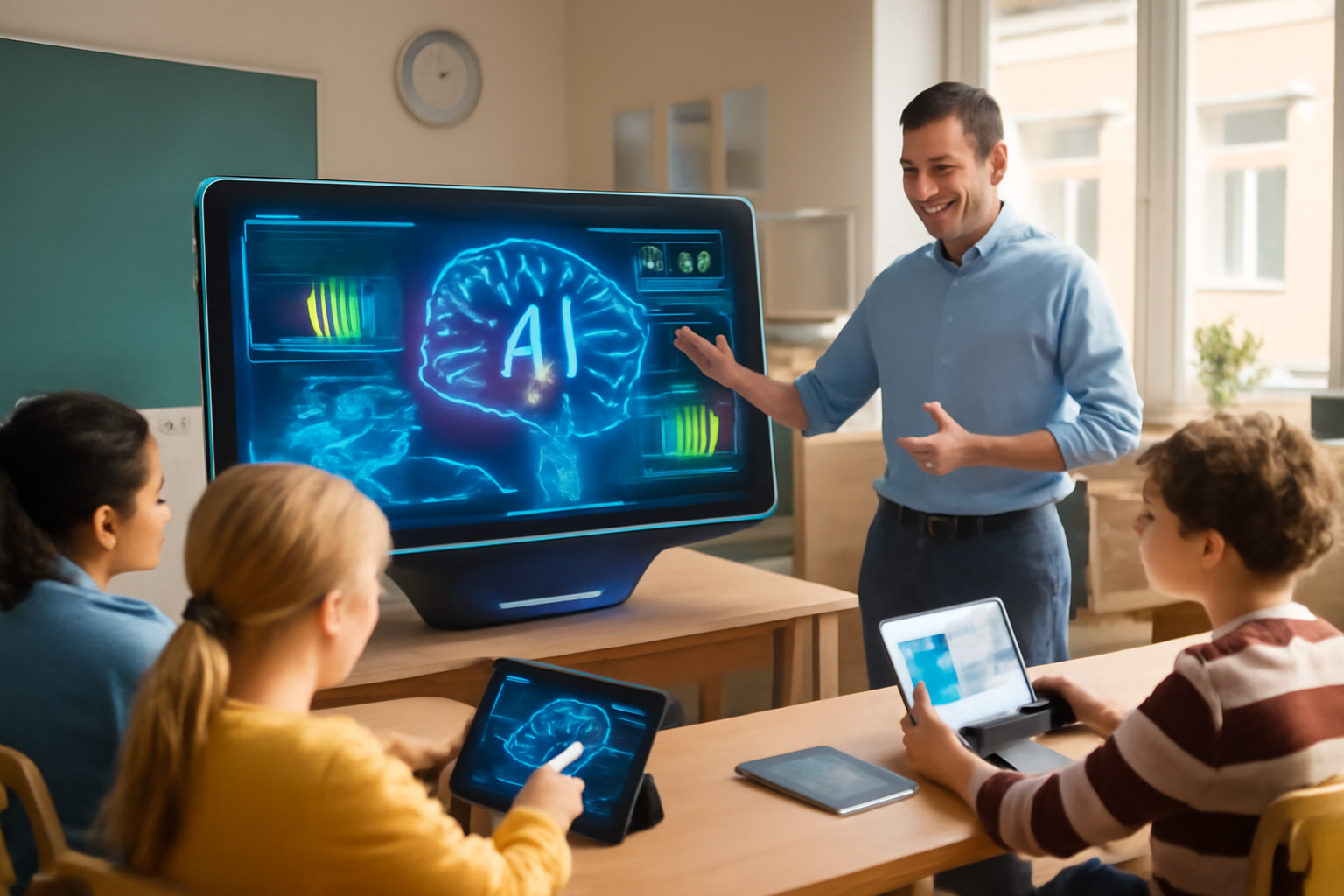“`html
Empowering Educators: How Teaching AI Usage Transforms Classrooms
In a rapidly evolving digital age, artificial intelligence (AI) is no longer a futuristic concept — it’s becoming an essential tool in education. What many educators and schools are realizing is that by educating teachers about how to thoughtfully use AI and guiding them to apply it effectively, they can revolutionize learning experiences for students.
Why Focus on Teachers When Talking About AI?
When the conversation about AI in schools usually arises, the spotlight often shines on the students — their new access to powerful AI tools, their concerns about cheating, or their excitement around innovation. Yet, teachers are the crucial bridge between technology and students’ actual learning.
What we realized is, if we educate teachers about how to use AI in an informed and intentional way, and guide them to the appropriate pedagogical methods, we empower them to harness AI as a learning assistant, a creative partner, and a personalized tutor.
Take the example of Sunset High School in Portland, where students and educators are rethinking AI not as a shortcut or threat, but as a tool that enhances teaching and learning alike. Here, teachers are being trained to guide students in using AI responsibly and creatively, which fosters a deeper engagement with both technology and curriculum content.
Transforming Challenges into Opportunities
When AI entered classrooms, many teachers felt apprehensive. Concerns about academic integrity, the difficulty of integration, and the fear of unknown tech tools were legitimate hurdles. But as schools started investing in professional development focused on AI, attitudes shifted.
“Instead of fearing AI could replace their role, teachers learned how to build lessons around AI’s capabilities—making it a partner rather than a competitor.”
By providing teachers with structured support, including how to:
- Use AI to generate writing prompts or help outline essays, while promoting critical thinking
- Personalize learning by giving feedback tailored to students’ unique needs
- Engage students in ethical discussions about AI and digital literacy
- Encourage creativity through AI-assisted brainstorming and problem-solving
…teachers found that AI could enhance—not hinder—their instructional goals.
From Uncertainty to Mastery: What Teacher Training Looks Like
Professional development programs focusing on AI usage tend to have these pillars:
- Introduction & Context: Understanding what AI is — separating myths from facts.
- Hands-on Experience: Trying AI tools in safe environments and seeing potential use cases.
- Pedagogical Strategies: Learning how to integrate AI into lesson plans while maintaining critical skills like research, analysis, and reflection.
- Ethical Framework: Addressing concerns such as bias, privacy, and academic integrity.
- Continuous Support: Creating communities of practice so educators can share insights and keep learning.
Resources from trusted organizations help teachers gain the best knowledge on AI in education. For example, the Stanford Graduate School of Education has published insightful articles and case studies that explore how teachers are adopting AI thoughtfully.
The Ripple Effect: Benefits Beyond the Classroom
When teachers are comfortable and confident with AI tools, the benefits extend far beyond individual lessons. Some positive outcomes include:
- Student Empowerment: Students learn to critically evaluate AI-generated content rather than passively accept it.
- Equity in Learning: AI tools can help identify learning gaps and tailor support for diverse learners.
- Teacher Efficiency: Automating administrative tasks like grading drafts frees up time for personalized feedback.
- Future-Ready Skills: Both educators and students build fluency in emerging technologies that shape career paths.
Looking Ahead: AI as a Collaborative Partner in Education
The mission now is clear: to continue investing in teacher education around AI so the classroom evolves with technology rather than resists it.
By embracing AI as a collaborative partner, teachers not only safeguard the integrity of education but also invigorate their teaching with new possibilities. As Edutopia highlights, “Educating teachers about AI creates a culture of curiosity and responsible innovation.”
For educators, schools, and policy makers eager to learn more, consider exploring these additional readings:
- Getting Smart’s exploration of teachers’ perspectives on AI
- Commonsense Education’s guide on teaching kids about AI
- Education Week’s AI in Education Spotlight
We are witnessing a pivotal moment where empowering teachers with knowledge and tools to use AI shapes the future of education itself. Embracing this opportunity can ensure AI benefits learners in meaningful, sustainable ways — unlocking creativity, personalized learning, and new educational horizons.
“`

Leave a Reply